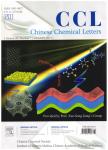版权所有:内蒙古大学图书馆 技术提供:维普资讯• 智图
内蒙古自治区呼和浩特市赛罕区大学西街235号 邮编: 010021

作者机构:MOE Key Laboratory of Macromolecular Synthesis and Functionalization State Key Laboratory of Silicon Materials Department of Polymer Science and Engineering Zhejiang University Hangzhou 310027 China Department of Physics The Chinese University of Hong Kong Hong Kong 999077 China Department of Electrical and Computer Engineering Ben-Gurion University of the Negev Beer-Sheva 8410501 Israel
出 版 物:《Chinese Chemical Letters》 (中国化学快报(英文版))
年 卷 期:2019年第30卷第6期
页 面:1277-1281页
核心收录:
基 金:supported by the National Natural Science Foundation of China(Nos. 21875216, 21734008, 21474088, 51473142, 51561145001, 51620105006, 61721005) Zhejiang Province Science and Technology Plan(No.2018C01047) Research Grant Council of Hong Kong(General Research Fund No. 14314216, CUHK Direct Grant No. 4053227)
主 题:Poly(3-hexylthiophene) Non-fullerene acceptors Organic solar cells Energy loss Thickness insensitivity
摘 要:Poly(3-hexylthiophene)(P3HT) is a low-cost polymer donor for organic solar cells (OSCs). However, the P3HT-based OSCs usually give low power conversion efficiencies (PCEs) due to the wide bandgap and the high-lying energy levels of P3HT. To solve this problem, in this work, we design and synthesize a new A-D-A type non-fullerene acceptor, DFPCBR, which owns an electron-donating (D) core constructed by linking a 2,5-difluorobenzene ring with two cyclopentadithiophene moieties, and two electron-accepting (A) end-groups of benzo[c][1,2,5]thiadiazole connected with 3-ethyl-2-thioxothiazolidin-4-one. Because of the strong electron-donating ability and large conjugation effect of D core, DFPCBR shows appropriate energy levels and a narrow bandgap matching well with those of P3HT. Therefore, with P3HT as the donor and DFPCBR as the acceptor, the OSCs possess broad absorption range from 350 nm to 780 nm and the reduced energy loss (Eloss) of 0.79 eV (compared with ~1.40 eV for the P3HT:PC61BM device), providing a good PCE of 5.34% with a high open-circuit voltage (VOC) of 0.80 V. Besides, we observe that the photovoltaic performances of these devices are insensitive to the thickness of the active layers:even if the active layer is as thick as 320 nm,~80%of the best PCE is maintained, which is rarely reported for fullerene-free P3HT-based OSCs, suggesting that DFPCBR has the potential application in commercial OSCs in the future.